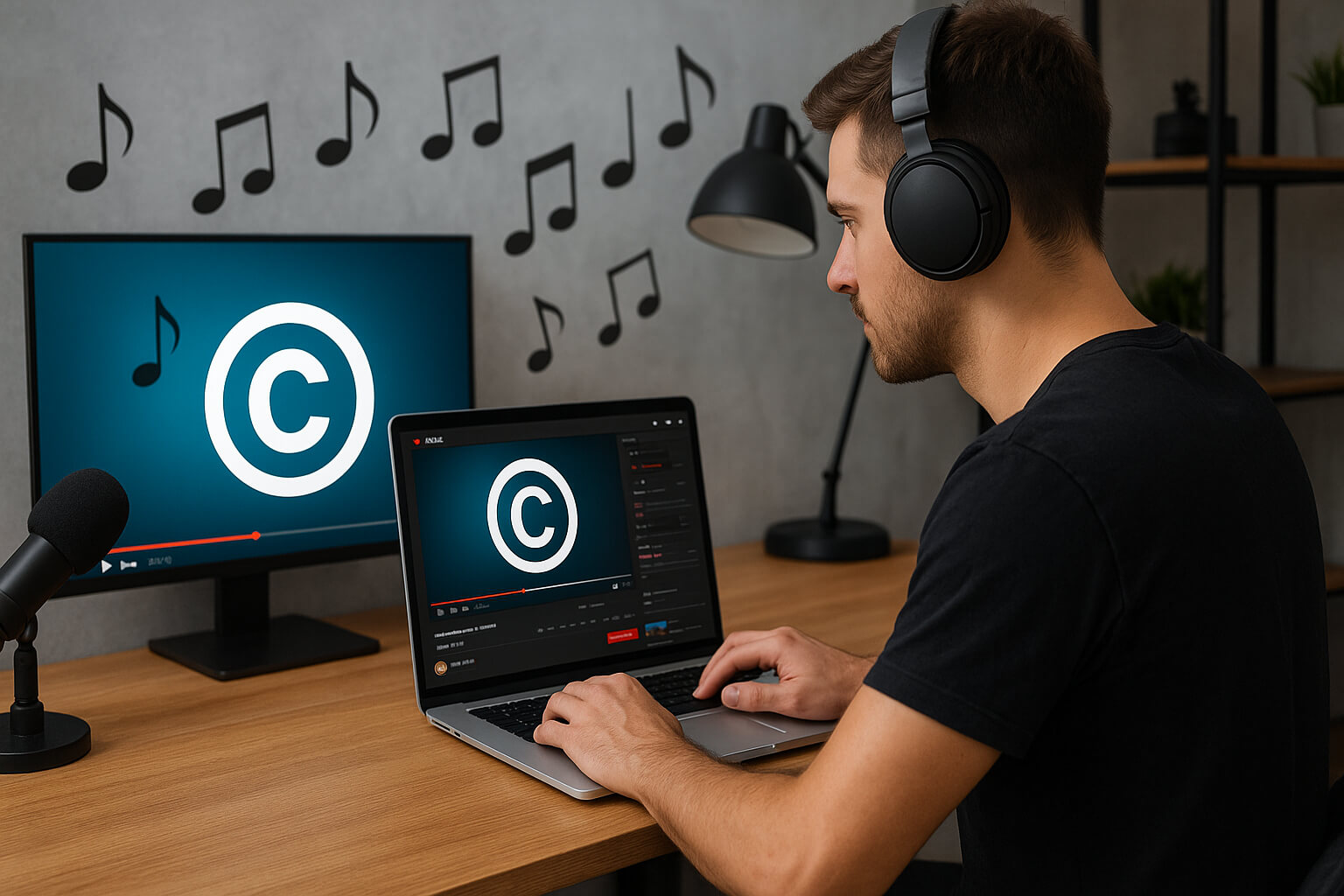August 14, 2025

When you upload videos to YouTube, music plays a huge role in setting the tone, building emotion, and engaging your audience. But using the wrong music—even unintentionally—can have serious consequences, from losing monetization to having your video blocked or even your entire channel shut down. Whether you’re a vlogger, gamer, educator, or filmmaker, understanding music copyright laws and YouTube’s rules is essential for long-term success.
Music copyright gives the creators of a song—such as composers, lyricists, performers, and producers—exclusive legal rights to control how their work is used. These rights include:
Using copyrighted music without permission can trigger:
Example: Uploading a vlog with Taylor Swift’s “Shake It Off” playing in the background—even from a nearby radio—can cause a Content ID match. Your video may be demonetized or muted, and the revenue redirected to her record label.
Reference: YouTube Copyright Basics
Content ID is YouTube’s automated copyright detection system. Every time you upload a video, it’s scanned against a massive database of music, video clips, and sound effects submitted by copyright owners.
Pro Tip: Content ID claims are not copyright strikes, but repeated claims may affect your channel’s algorithmic ranking and monetization eligibility.
Note: Manual copyright takedowns—where a copyright holder files a formal complaint—are more serious and result in actual strikes.
To avoid copyright issues and stay on the right side of the law, consider using music from sources designed for creators.
Trusted Royalty-Free Sources:
Example Platforms:
Tip: Always read the Creative Commons license carefully. Not all CC music is free for commercial or YouTube monetized use.
Explore here: YouTube Audio Library
If you want to use mainstream songs (e.g., Billie Eilish, The Weeknd), you’ll need a sync license (permission to synchronize music with visual content).
Popular Licensing Services:
Warning: Even buying a song on iTunes or streaming it via Spotify does not give you legal rights to use it in a video.
Related: Digital Audio Workstations Explained
Fair Use is a legal doctrine that allows limited use of copyrighted material without permission for purposes such as:
However, fair use is not guaranteed protection, and it’s often misunderstood. YouTube’s automated systems do not “understand” fair use—they may still block or demonetize your content.
Example: A movie review that includes short clips from a film could fall under fair use, but if too much of the film is used, or if it’s just re-uploaded with little commentary, it could be taken down.
Tip: If you believe your use is fair, you can dispute the claim—but this process can be slow, and rights holders often reject fair use disputes.
To keep your videos safe and monetizable, follow these tips:
Final Tip: When in doubt, assume a track is copyrighted unless you have explicit permission or a valid license.
Related: Understanding Audio Interfaces — A Beginner’s Guide
Using music legally on YouTube isn’t just about avoiding penalties—it’s about respecting artists, protecting your channel, and building a sustainable creative brand. Whether you're just starting out or already monetizing, following copyright rules helps you stay safe, professional, and successful.
Stay up to date with the latest tips, expert insights, product reviews, and step-by-step guides to help you grow, create, and succeed—no matter your industry or passion.